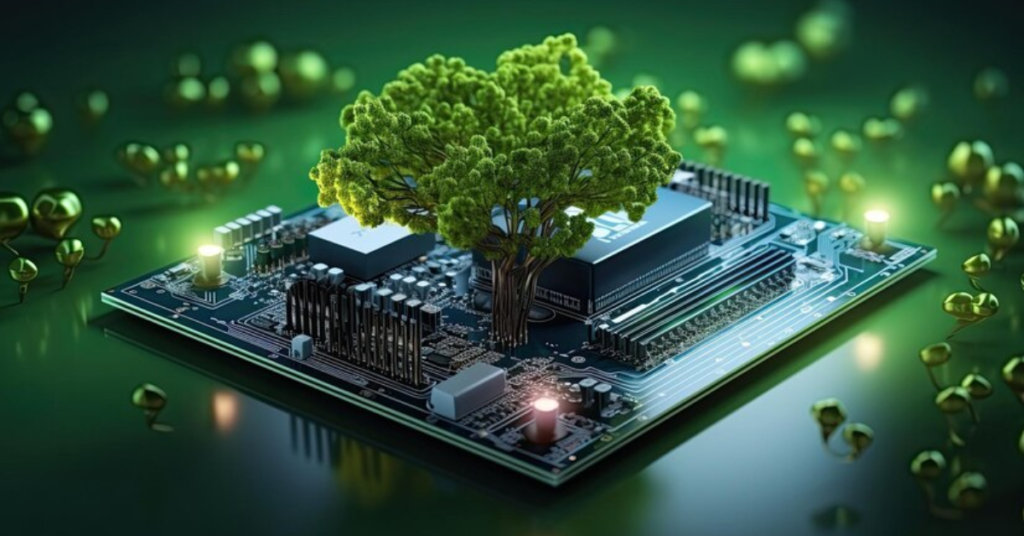Efficiency and sustainability have emerged as key requirements due to the increasing emergence of giant data centers. The huge energy demand is therefore plausible to sanction resourceful practices that can address the operational performance of these buildings without compromising the environment. In comes Artificial Intelligence (AI), one of the disruptive tools that’s revolutionising the way data centres incorporate renewable power sources.
The Energy Challenge For The Data Centers
Cloud platforms together with other service providers rely on data centers for the smooth performance of many services, be it computing or streaming services. However, this comes at a cost: data centers at the current time use about one percent of the global electricity and there have been indications that it is even higher. Organizations have started integrating renewable energy into their systems since they strive to achieve the carbon-neutral targets.
In what ways does AI help integrate Renewable Energy?
AI provides data center administrators with a modern form of managing and optimizing renewable energy integration into the data center. Here are key ways AI drives this transformation:
- Dynamic Energy Management
Even now, AI algorithms can predict the overall load demand pattern and try to match it with renewable power generation systems. For instance, Self-Driving can allocate high-energy operations during the period with optimal solar or wind energy production.
- Grid Control and Regulation
AI helps the data center and local grid manage energy distribution between the local grid and renewable energy sources optimally. The application of the uses of AI means that it is possible to avoid grid overloads and keep energy supply fully stable while renewables’ availability changes.
- Predictive Maintenance for Renewable systems
Bio of technical systems can be applied in renewable energy devices including solar panels and wind turbines, to check on their health and provide an early warning system for failures. This makes the energy generation to be constant since less equipment has to be repaired or replaced regularly.
- Energy Storage Optimization
Hence, the storage of renewable energy sources is often challenging because the resources available in this energy type are not constant. AI regulates the application of technologies including batteries and energy storage technologies whereby it predicts the amount of energy that is generated, stored where there is excess energy and supplied to the grid when needed.
- Carbon Footprint Monitoring
Industry instrumentation enables detailed evaluation of carbon emissions within a data center, through analysis of energy sourcing and usage. This information is vital for such reporting and performance towards sustainability goals Matthez (2011) p 1528.
Advantages of AI-Driven Renewable Integration
Several advantages of AI-Driven renewable integration are:
- Cost Savings: Conservation of energy leads to minimise expense with regard to electricity in the running of activities.
- Enhanced Reliability: The unpredictability of renewable sources of energy is balanced effectively by means of AI ensuring constant energy delivery.
- Sustainability: Artificial intelligence optimization enhances the systems’ use of clean energy hence minimizing the dependence of fossil fuel.
- Scalability: AI solutions also expand with the growing energy requirements for growing data center business.
- Google’s Data Center With Appropriate Artificial Intelligence
Google has been the for-runner in the use of AI technology to enhance energy efficiency at its data centers. Through DeepMind’s artificial intelligence application, cooling has been optimized, and it has been made to work in tune with renewable energy by cutting out 30% of its cooling energy use.
- Amazon Web Services (AWS) Sustainability Program
AWS refers to AI investing in wind and solar farms to supply consistent energy to its data centers.
Challenges and Considerations
While the integration of AI and renewable energy offers significant benefits, there are challenges to address:
- Data Quality: AI systems seek data in the necessary and correct order and within the necessary time frame.
- Cost of Implementation: First costs needed to deploy AI and renewable energy can be high.
- Regulatory Compliance: Complexity also arises from having to traverse diverse energy regulations across the regions.
Cybersecurity Risks: AI and digital systems have become dominant in modern organizations making the entities prone to cyber exploitation.
The AI future and Renewable Energy of Data Centers
This however is set to change in the near future as AI integration to renewable energy systems progresses. Emerging trends include:
Collaborative AI Models: Proposes an architecture of an AI system that combines data obtained from various data centers to manage energy efficiency in different regions.
AI-Driven Microgrids: The smart mini-grids driven through Artificial Intelligence which are capable of handling decentralized renewable energy systems.
Real-Time Carbon Tracking: Brought the advanced analytical tools to get the updated information on Carbon emission and Carbon offsets on real time basis i.e.on per minute basis.
At hostaix, we only focus on presenting state-of-art artificial intelligence based solutions for data centres on one hand, and are committed to offer the best solutions in adopting renewable energy for business organizations on the other hand. Our expertise ensures:
- Tailored AI Implementation: We create and implement unique solutions or AI systems for your energy organization’s needs.
- Sustainability Expertise: They are actually in consonance with the recommended strategies in integrating renewable energy systems.
- End-to-End Support: Hostaix is with you through every stage of your business – starting from consultation to further SEO optimization.
Together let us help create a world in which technology and sustainability go hand in hand. Host your data with hostaix and guide your organization in the process towards better, more efficient sustainable management.
Conclusion
When combining AI and renewable energy, the potential for reshaping data center emissions is strong. AI when applied to data centers, can maximize the results never seen before in terms of efficiency, reliability and sustainability. At hostaix, we are devoted towards using artificial intelligence solutions for enabling the Data center of the future and green Data center.
